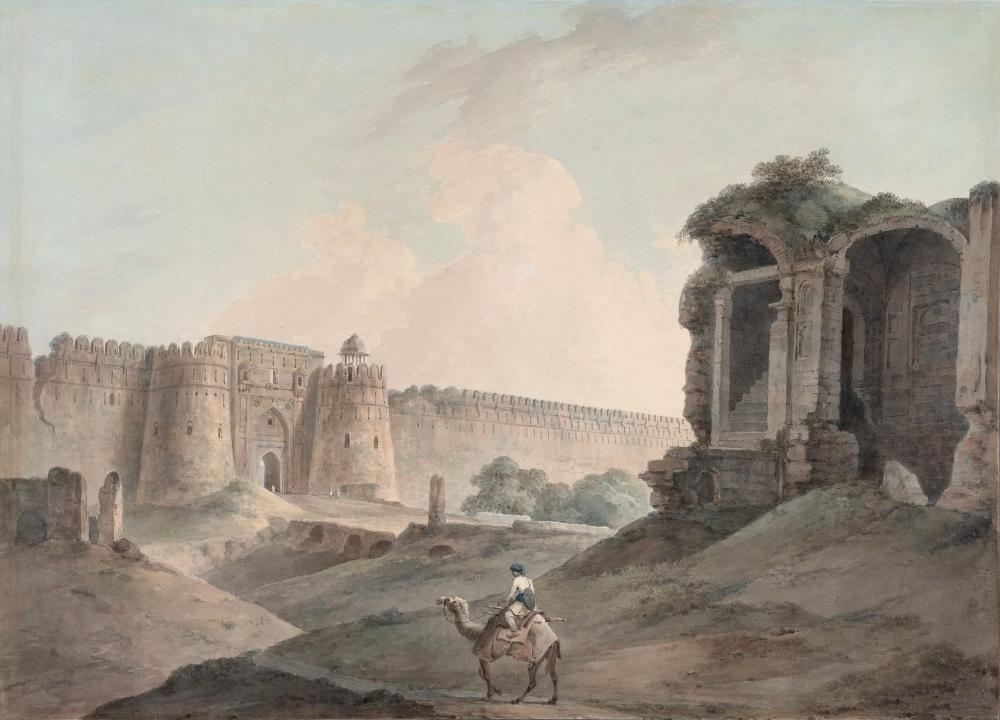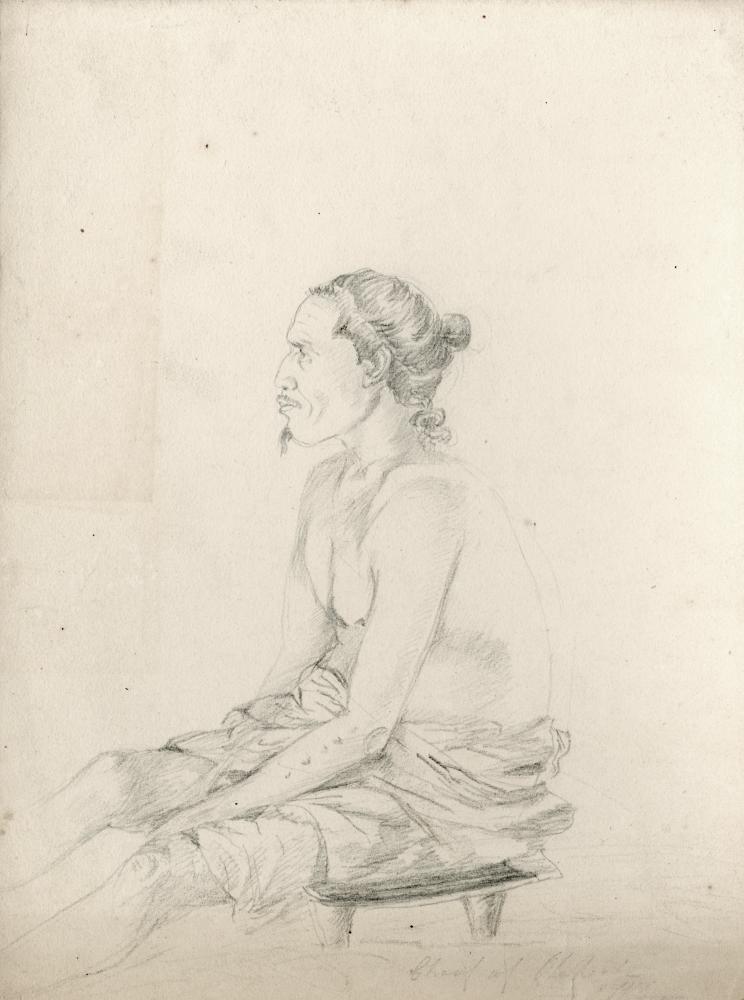John William Lewin
(1770-1819)
NAU.NE.A.I
Provenance
UK Public Institution
Lewin sailed to Tahiti aboard the Norfolk in November 1801: his intention was to collect insects and, he hoped, to find gold, while the rest of the party was there to buy a supply of pork which would be salted and taken back to the colony. They arrived to find the islands in the midst of a vicious civil war, and when their ship was wrecked on 25 March 1802 they found themselves in considerable danger as the ruling King of Tahiti, Pomare, and his royal clan took refuge with the party at a point in the conflict when events were going against him. While they awaited rescue they withdrew to a missionary station along with the crew of another vessel which was also in Tahiti to buy provisions for the New South Wales settlement. Eventually they were taken off the island by HMS Porpoise which brought them back to Sydney in December 1802: their presence in the meanwhile had turned the fortunes of the war in favour of Tahiti’s king and his family. For most of his time on the island Lewin was preoccupied with taking part in fortifying and defending the position they held. It was presumably too dangerous to go beyond it chasing butterflies or prospecting for gold, but he had taken his drawing supplies with him and he evidently had some time to spare to practice his art.
It seems to have been while he was on Tahiti that he focussed his efforts particularly on developing his portrait repertoire, something he had already been doing on arrival in Australia since there is an early reference to him having made two sketches of Aboriginal Australians before he left with the Norfolk. Until now, the earliest surviving portraits by Lewin were the five Tahitian likenesses belonging to the State Library of New South Wales (Mitchell Library), Sydney, all with faintly sketched half-length outlines and with their heads finished in watercolour. They seem less spontaneous than the nine Tahitian drawings which have newly come to light. These have more immediacy, as well as greater delicacy in their draughtsmanship. Seven of them are purely graphite sketches finished to different degrees, but all are drawn with an understanding of facial structure and modelled with some subtlety and refinement; those that show the full figure effectively capture attitudes and present the subject with grace and informally observed naturalness. One of the Tahitian drawings is lightly touched with pale ink wash to add delicacy to the modelling of head and features; the remaining example, an engaging portrait of a young woman who looks directly out towards the artist, is completed in exquisitely handled translucent watercolour laid down with fluent spontaneity. None of them give the impression of an artist who is not already an accomplished portraitist.


